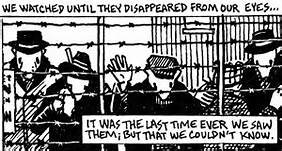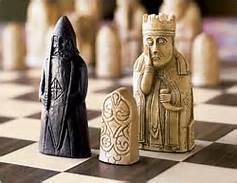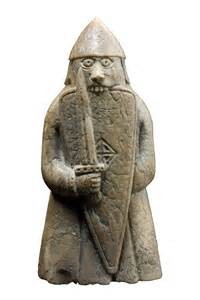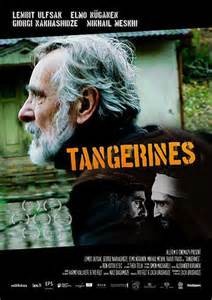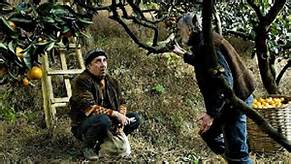by Caroline Todd
Here’s a quick summary of every Art History course from 101 to an honors thesis: every artistic movement is a reaction against whatever came before it. After the austere extravagance of the Baroque era, the French aristocracy introduced the light, whimsical, Rococo style, and the Realists followed the Romantics. Nowadays, though, the art world is stuck in a strange limbo. Many art historians and critics refer to our contemporary art scene as “post-postmodernist” (some are serious, but thankfully most are joking) – though modernism stuck around for a while after World War II, our self-reflective postmodern ship sailed a few decades back. With a critical perspective on artistic production at the center of artists’ minds since the 1950s and ’60s, our predominant artistic mode has been anti-establishment ever since. In fact, it’s been that way for so long that we no longer have any boundaries to test. Real people visited a Chicago art gallery in 2010 to watch a performance artist open a can of Spaghetti-Os and stuff them in her pants while reciting a nihilistic poem. In 1991, a New York investment banker paid $12 million for a dead shark placed in an enormous tank of formaldehyde (that eventually decomposed to the point that it had to be replaced). All this more than forty years after celebrated composer John Cage premiered his famous work 4’33” – four minutes and thirty-three seconds of silence.
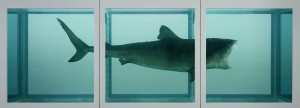
Call me a traditionalist, but there’s little contemporary art I legitimately enjoy. When I visit a museum, my first stop is the late-nineteenth- and early-twentieth-century European art galleries; I’m one of the emerging avant-garde’s biggest fans. Though the art world has never been a flawless one, and gifted artists go overlooked just as less-talented-but-well-connected ones ascend to fame, the twentieth century’s decreased attention to aesthetics makes talent less a part of the artist-as-celebrity equation than it used to be. Now it’s more about ideas, which is admirable to an extent – after all, pure aesthetics can only go so far to convey the depth of human experience. But since what people are willing to pay for your work serves as a measure of your worth as an artist, those who somehow manage to make millions of dollars on a few pieces emerge triumphant. Take Jeff Koons, for example, who came to the art world from Wall Street. Armed with knowledge of what an equal parts fabulously wealthy and spectacularly pretentious New York art market might be willing to pay for, he made his artistic debut in the 1970s. (One time, he stuck three basketballs in an aquarium, and another time he set four vacuums on display in a glass case.) His Balloon Animal (Orange) recently sold at Christie’s for $155 million, making it the most expensive artwork ever sold by a living artist. Of course, it can’t even really be called “his” Balloon Animal, as Koons’ process relies entirely on his artistic workshop making every one of his pieces for him.
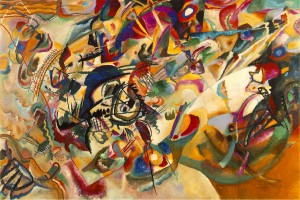
Koons’ work, as well as other contemporary artists’, raises an important question: is it truly good art, or does its value stem from the good name attached to it? As an English and Art History double major, I’ve become somewhat of a snob by default, and I understand just enough postmodern cultural theory to declare the latter. But my official pronouncement of Bad Art stems out of a respect for all the works I’ve mentioned so far, with no small amount of disdain, as “art” – which at its most basic definition is anything, truly anything, the artist or creator decided to endow with the title. You can’t claim something like Wassily Kandinsky’s Composition VII isn’t art because your four-year-old niece could do it, chiefly because she didn’t, and she probably wasn’t around to understand the transformative cultural implications of expressionistic art in pre-revolutionary Russia.
Art hasn’t always been perfect – the Old Masters had workshops too, and they didn’t paint every one of their works all by themselves, especially if they were in high demand. Many artists in the eighteenth and nineteenth centuries became famous because they were in the right place at the right time, or were lucky enough to have enough money to spend on an extensive Royal Academy training. (Of course, most of these artists also happened to be white men, but redefining the artistic canon is another problem altogether.) Generally, though, the artists we keep coming back to have one thing in common: they set historical precedent. Major players like the Cubists, the Dadaists, the first performance artists, or my favorite Manet, all caused a stir, but a few brave others followed suit and the legitimate movements that we still discuss today were born.
You can’t do that with Spaghetti-Os.


